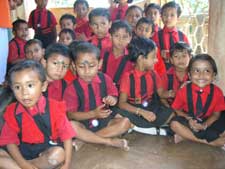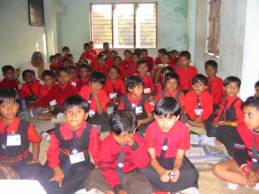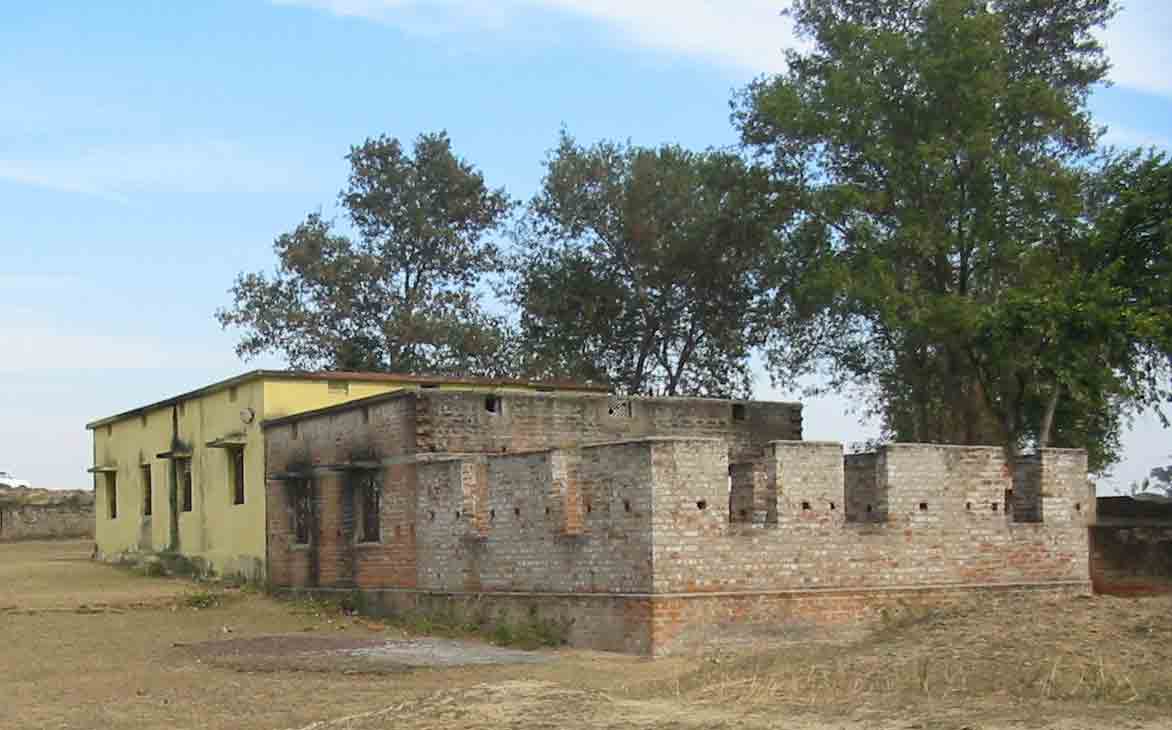







       |
How Much Does it Cost to Run a School?
  Children at school without desks Children at school without desks Unfinished Rooms at Talmu Unfinished Rooms at Talmu
Back to Top
The High School, near Talmu Home in Ananda Nagar, is once again typical of many of our schools in India. It has 4 rooms, no toilet, office or well. Drinking water is carried from the Talmu Children's Home. The children use the open field for the toilet. There are two unfinished rooms. The children sit on the floor on recycled canvas sacks that they bring from home. They need stationery, blackboards, and notebooks. But even this is better than no education at all.
| Education is the birthright of all, yet in India less than one child in 1000 ever completes secondary school. Since children must pay for their notebooks and textbooks, it is beyond the means of many to go at all. It may also be that a poor child is required to take care of younger siblings while both parents work, or themselves join the workforce and help supplement the family's meager income. Even today, at least 10% of all Indian children never set foot in a school at all. Our schools, located throughout India are attempting to make a difference. We help support 30 schools (the Pratyanta Schools) at Ananda Nagar, in West Bengal India, numerous other schools in other areas of West Bengal, as well as schools around the world. The Pratyanta (Remote Area) Schools There are 30 free Primary and Post Primary Schools at Ananda Nagar for the benefit of the poor tribal children without any distinction given to caste, community, creed or color. These schools were built with the generous aid of individuals, charitable organizations and aid agencies. These schools have been in existence for the last 15 - 20 years and the children who graduate from the Primary Schools are admitted to the High Schools at Ananda Nagar which are affiliated with the Board of Secondary Education, West Bengal. Eight junior high schools are part of the post-primary education. All these schools teach both English and Bengali, the mother tongue, as these schools are situated in West Bengal. In addition to the traditional education system, these schools also impart moral and non-denominational spiritual teachings, cultural moorings of the country and Stu-Vol (students volunteers) teachings to help them become effective citizens from an early age. The total number of students studying in these 30 schools is 2236 as of 9/1/2005. The total numbers of teachers teaching in these schools are 72 men, and 11 women (including monks and nuns). The total number of students who have graduated from these schools so far is around 10,000. Details about these schools can be found on our Pratyanata (Remote Area) Schools page. Back to Top Other Schools Radha and Haripriya visited a number of other schools in West Bengal in 2005. These schools also benefit poor children without any distinction given to caste, community, creed or color. Details about these schools can be found on our Other Schools page. Back to Top |